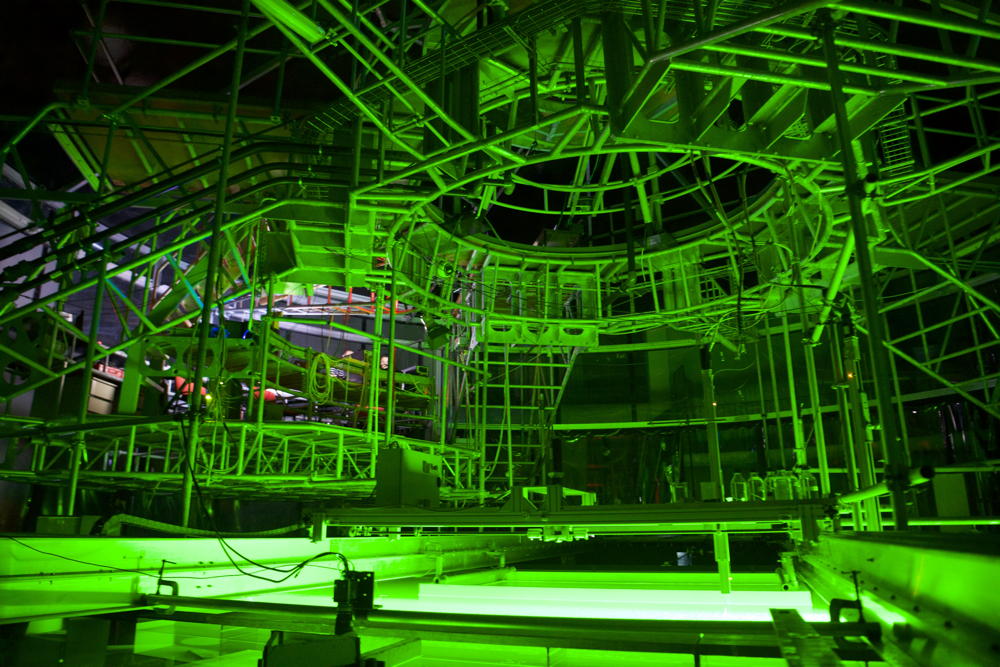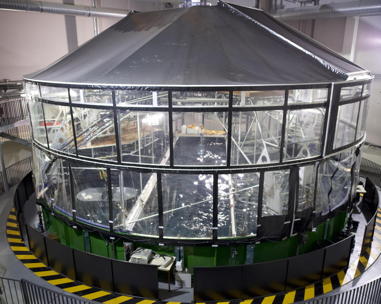Internal waves in a stratified fluid
The Coriolis facility in LEGI is suited to study such stratified turbulence. First, when stratified flows are concerned, the flow must remain slow if one wants the dynamics to be strongly affected by gravity (the Froude number must remain small). At the same time, we want that the nonlinearities can develop and this means that the Reynolds number (Re=UL/𝜈) must be large. The viscosity 𝜈 can not be changed and the velocity U must be relatively small. Then to increase the Reynolds number one needs to increase the size L and use a large facility. The tank of the Coriolis facility is 13m in diameter and 1m deep. It can rotate as well to investigate the effect of the Coriolis force as well (the ocean is subjected both to stratification and the rotation of the Earth). It makes it the largest rotating facility in the world.
You can have a virtual visit of the Coriolis facility.
Salt is used to increase the density of water. As there is over 100 tons of water, a 1% concentration means 1 ton of salt ! An hydraulic system with tanks (for brine, solutions and clear water), pumps and so on is available to setup arbitrary (stable!) density profiles. In the WATU project we use linear stratifications.
We generate waves using 2 vertical oscillating panels in a 6mx6mx1m volume. We observe the development of a nonlinear regime of internal waves. Further characterization is underway.

The green atmosphere of the
YAG lasers used for PIV measurements.

Antoine and Miguel are
preparing the experiments. They give the scale of the
facility !

The water is seeded with
neutrally buoyant particles.
A laser sheet is send in
the fluid to perform PIV measurements of the velocity.
The laser sheet is scanned
vertically to obtain a 3D-2C velocity field.





